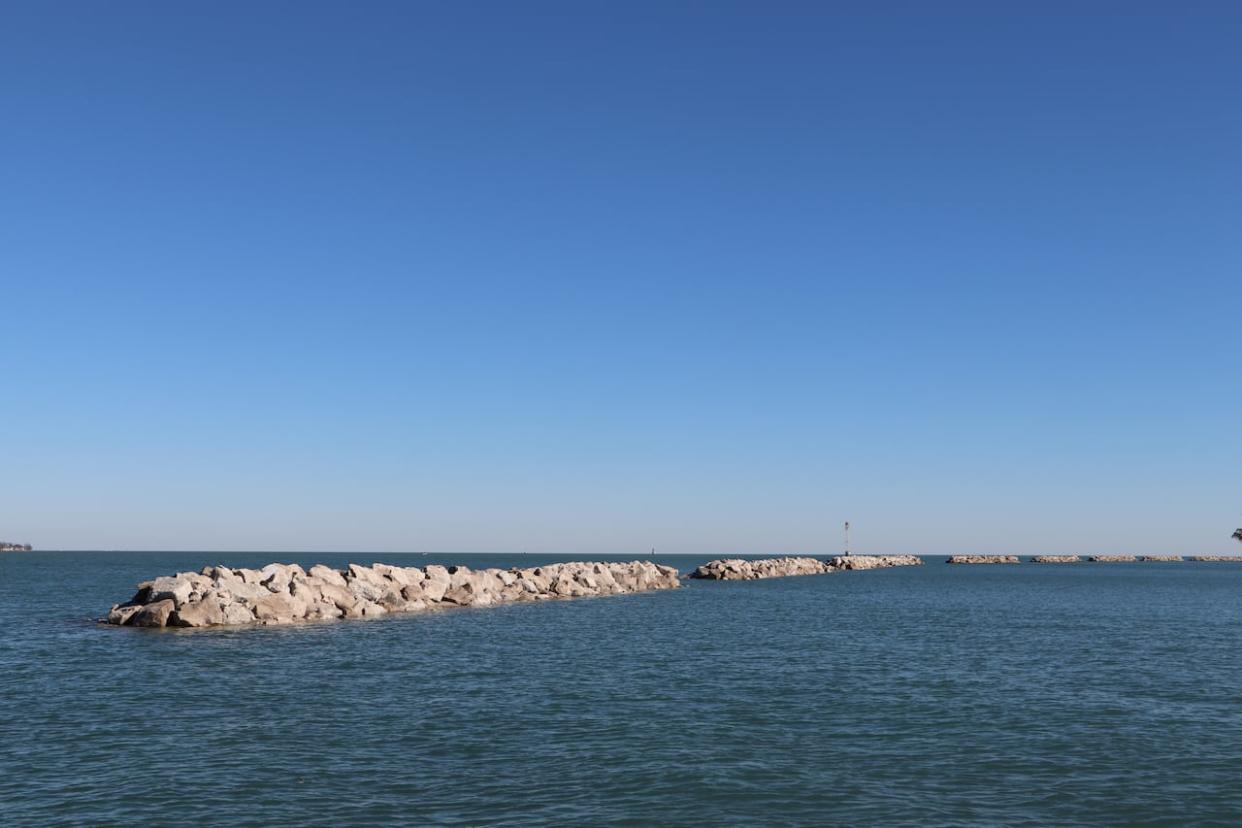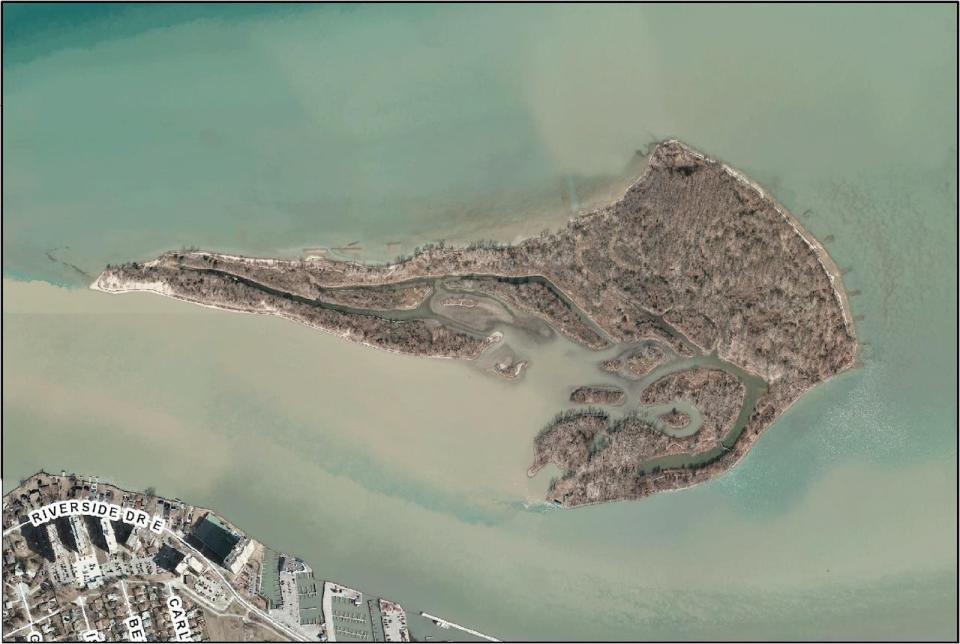Further erosion of Peche Island prevented, says Detroit River cleanup group

A project aimed at preventing further erosion of Peche Island has been a success, according to the group behind the efforts.
Nine rock berms 50 metres in length were laid in the Detroit River in 2021 and 2022, protecting the northern side of the island from high waves and currents and creating a calm water area in front of the island.
"We wanted to create this calm water area to reduce the wave energy that's eroding the island and making chunks of it fall into the river," said Jackie Serran, the remedial action plan coordinator for the Detroit River Canadian Cleanup (DRCC), a collaboration between environmental groups, researchers, the federal and provincial governments, the Essex Region Conservation Authority (ERCA) and the municipalities of Windsor, LaSalle and Amherstburg.
The 35-hectare island, located on the Canadian side of the Detroit River in Windsor's east end, is owned by the city.
According to Serran, the DRCC estimates Peche Island decreased by about seven hectares in area between 1931 and 2015.

Jackie Serran is the remedial action plan coordinator with the Detroit River Canadian Cleanup. She says the goal of the project was to create a calm water area in front of Peche Island to prevent further erosion and attract fish. (TJ Dhir/CBC)
Erosion of land by water occurs when rain, rivers, floods, lakes and oceans carry away bits of soil and sand as well as washing away the land's sediment.
Since the berms have been laid, Serran says wave action in the calm water area has decreased.
Another benefit is the restoration of the local ecosystem.
"We're seeing submerged aquatic vegetation which we didn't have in the area before," said Serran. "In high wave environments, this aquatic vegetation can establish because it gets taken downstream by the waves and currents. We're seeing that submerged aquatic vegetation established as a result of the project behind the island."

Peche Island after the construction of the rock berms. (Submitted by Essex Region Conservation Authority)

Peche Island before the construction of the rock berms. (Submitted by Essex Region Conservation Authority)
As a result of the vegetation re-emerging, Serran says 35 different species of fish have used the new habitat that has been created.
"We've seen [species] like largemouth bass, smallmouth bass and even species at risk," said Serran. "This area here is critical for the northern madtom, which is endangered. This area in particular has been identified as critical for its recovery. As part of this project, we tried to target the northern madtom and try to improve the habitat for it."
Serran says it feels great to have exceeded their expectations of how many species would show up, given that they were only expecting two new species to arrive.
What does the future look like?
According to Kevin Money, the director of conservation services at ERCA, the Peche Island project has a 50-year lifespan.
He also says the berms will now be under the jurisdiction of the City of Windsor.
"There's some occasional inspections that need to occur, but there really shouldn't be anything that needs to happen out there from a maintenance perspective," he said.

Kevin Money is the director of conservation services at the Essex Region Conservation Authority. (Kaitie Fraser/CBC)
Money said the project will be reevaluated at the end of the 50 years, but he hopes that the Detroit River will be a different river than it is today.
"I think by that time we will hopefully be in a place where the Detroit River is no longer an area of concern," he said. "Fifty years ago, the state of the river was very different than it is today. It's improved dramatically and we've seen huge changes, so it's pretty hard to tell what's going to happen 50 years from now and what the river looks like 50 years from now."

A fish swimming in the calm water area created by nine rock berms at the north end of Peche Island. According to the Detroit River Canadian Cleanup, 35 different species of fish have used the submerged aquatic vegetation. (Submitted by the Ministry of Natural Resources and Forestry)
Serran says the DRCC now plans to undertake the same project of building similar berms to prevent erosion around Fighting Island, located off of LaSalle.
"We're hoping to build about six sheltering islands and hoping to improve the fish habitat down there as well," she said.
Serran says that project will be completed by 2026 at the earliest.


